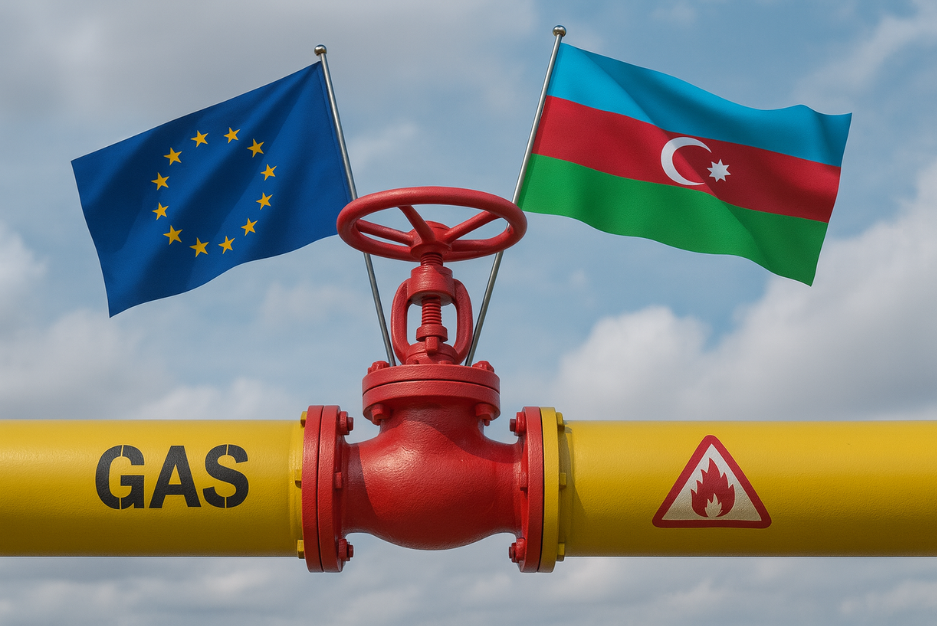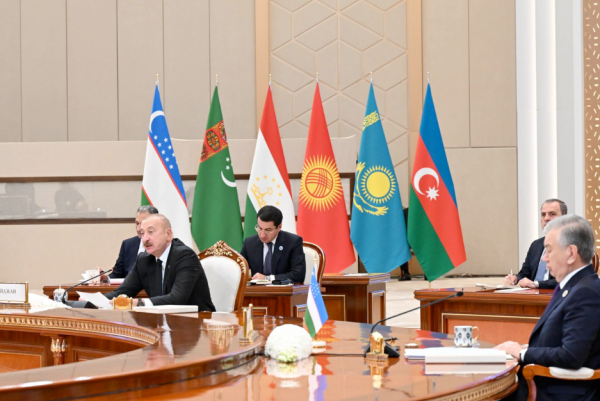Politics and physics: competing corridors and Azerbaijan's leverage in Europe's new gas order

Introduction
In the evolving energy landscape of the Eastern Mediterranean and the Balkans, recent developments have spotlighted two competing yet potentially complementary gas corridors. Greece has revived its role through the Israel-Cyprus-Greece alignment and the November 2025 3+1 ministerial meeting in Athens, where the United States reiterated its commitment to building an Eastern Mediterranean Energy Center. This diplomatic momentum was accompanied by new commercial activity, as international operators expanded their presence in Greek offshore acreage, signalling interest despite long development horizons. Türkiye, by contrast, leans on scale rather than symbolism. As one of Europe’s largest gas markets, it operates one of the region’s most extensive LNG regasification systems, with annual capacity around 55–60 bcm. In 2025, Ankara has sought to deepen its diversification portfolio through new long-term LNG arrangements with U.S.-linked traders and through the steady ramp-up of the Sakarya field, which is progressing toward an output level on the order of 10 million cubic metres per day.
At the centre of this competition lies Azerbaijan. Since late 2020, TAP alone has already carried more than 50 bcm of Caspian gas to Europe, with upstream flows on TANAP and emerging northbound volumes via the Vertical Gas Corridor reinforcing this supply chain. With the European Union aiming to end its dependence on Russian fossil fuels well before 2030, the question is not which corridor dominates, but how these routes reshape Azerbaijan’s access to European markets and the continent’s broader energy security posture.
Greece’s political-corridor narrative
Athens has positioned itself as the region’s political connector by blending U.S. engagement, EU regulatory alignment, and a narrative of renewed Eastern Mediterranean cooperation. The 3+1 ministerial gathering in November strengthened this trajectory by placing Greece at the forefront of discussions on regional coordination and energy governance. International operators’ increased activity in Greek offshore zones supported this political framing, even if commercial outcomes remain uncertain and distant. Greece’s physical role rests on its integration into EU energy law and its participation in the Vertical Gas Corridor, which moves LNG and pipeline gas from the Aegean north to Bulgaria, Romania, and ultimately Ukraine.
This northbound flexibility has made Athens more visible at a time when Europe seeks to reduce its exposure to Russian transit risks. But the limitations are equally clear. With regasification infrastructure amounting to roughly one-quarter of Türkiye’s capacity and persistent constraints at critical entry and compressor points, Greece influences political narratives more than volumetric realities. The EastMed pipeline remains an aspirational project, burdened by cost, engineering, and market feasibility concerns.
Türkiye’s capacity-based leverage
Türkiye’s role derives from physical depth rather than political elevation. Its gas system combines high domestic demand with diversified intake routes, positioning Ankara as the region’s most substantial transit and balancing point. Regasification assets approaching 60 bcm per year give Türkiye operational manoeuvrability unmatched elsewhere in Southeast Europe. Long-duration LNG supply arrangements signed in 2025, including multi-decade contracts with major U.S. traders, reinforce this flexibility. Meanwhile, output from the Black Sea field strengthens domestic supply security and reduces seasonal import exposure.
However, Türkiye’s ability to convert infrastructure into market influence remains constrained by institutional characteristics. BOTAS continues to dominate wholesale trade, and the absence of transparent price formation limits Ankara’s credibility as a potential gas hub in the European sense. Although Russian pipeline dependence has fallen sharply compared to the pre-2020 period, it has stabilised at around 40–42 percent in recent years, keeping questions over source traceability central for EU buyers preparing for Russia’s phased exit from the European market. Thus Türkiye provides capacity, optionality, and geography, but its political leverage will hinge on regulatory reform and improved transparency rather than infrastructure alone.
Azerbaijan’s pivotal role: pipeline reliability and corridor interdependence
Azerbaijan links the two corridors through consistently delivered volumes and scalable upstream potential. Since 2018, the TANAP-TAP system has transported nearly 90 bcm of Azerbaijani gas, including more than 52 bcm delivered to EU markets via TAP since late 2020. The system is on course to exceed the 100 bcm mark in 2026. TANAP’s future upgrades and improved coordination among transit states create room for additional volumes as European demand evolves.
The Vertical Gas Corridor enhances this network by offering a northward path that has become increasingly important for Ukraine. Initial winter flows are scheduled to begin in late 2025 through joint arrangements between Greek and Ukrainian operators. Although the bulk of these flows currently originate from U.S. LNG, the route remains technically compatible with Caspian gas, giving Baku an alternative to maritime LNG supply chains and providing Europe with another entry point.
Nonetheless, several bottlenecks persist. Infrastructure tightness between Bulgaria and Romania restricts full utilisation of the corridor, and political frictions between Türkiye and Greece complicate long-term synchronisation.
Still, Azerbaijan’s strategic advantage is clear: it does not need to choose between the two systems. Its ability to serve both creates redundancy at a time when Europe is deliberately phasing out Russian pipelines.
Strategic implications for Europe’s long-term energy security
For Europe, the coexistence of Greece’s political corridor and Türkiye’s capacity-driven route forms a dual architecture that mitigates risks while revealing vulnerabilities. Greece offers EU regulatory alignment and political predictability, while Türkiye provides unmatched throughput and flexibility. Yet neither alone can bridge the strategic gap created by the EU’s decision to phase out Russian pipeline imports. Azerbaijan binds the systems, with TANAP-TAP and the Vertical Gas Corridor serving as primary scalable non-Russian pipeline alternatives, expandable through Turkish and Balkan upgrades.
The EU’s LNG reliance, at about 37 percent of imports in 2024, heightens price volatility and maritime exposure, highlighting pipeline reliability and diversified entry points. Toward the 2030s, decarbonisation pressures and the emerging Caspian Green Corridor, now progressing through feasibility studies and China-linked renewable partnerships, will reshape regional energy priorities.
In this context, the dynamics between Greece and Türkiye matter less than the capacity of both systems to handle Azerbaijani volumes consistently and reliably.
Europe’s security depends not on favouring one corridor, but on sustaining a balanced system in which both remain functional and mutually reinforcing.
Conclusion
The Eastern Mediterranean and Balkan gas landscape has evolved into a dual structure in which Greece’s political corridor and Türkiye’s capacity-based system coexist, compete, and complement each other. Greece offers regulatory alignment and predictability; Türkiye provides scale and flexibility. Both rely on Azerbaijan as a stable, scalable supplier to remain strategically relevant.
As the EU phases out Russian pipeline imports by late 2020s and LNG dependence amplifies volatility and maritime risks, diversified pipeline routes will grow in importance. TANAP-TAP and the Vertical Gas Corridor give Azerbaijan the ability to stabilise this environment through incremental rather than unlimited growth.
Looking ahead, Europe’s long-term resilience will depend less on the symbolic weight of corridors and more on the practical ability of both systems to remain interoperable, bottleneck-free, and anchored by predictable Caspian supply.







